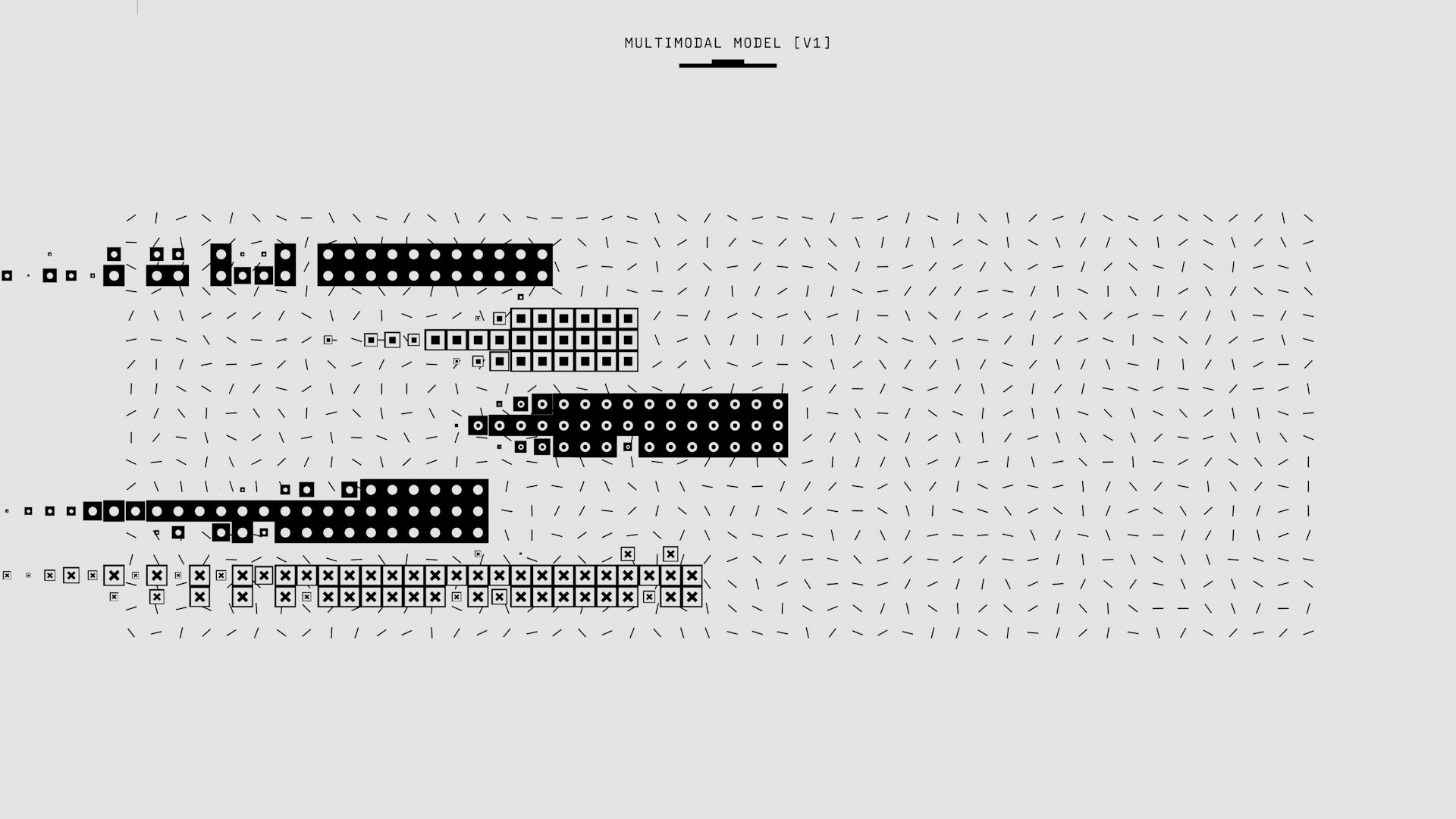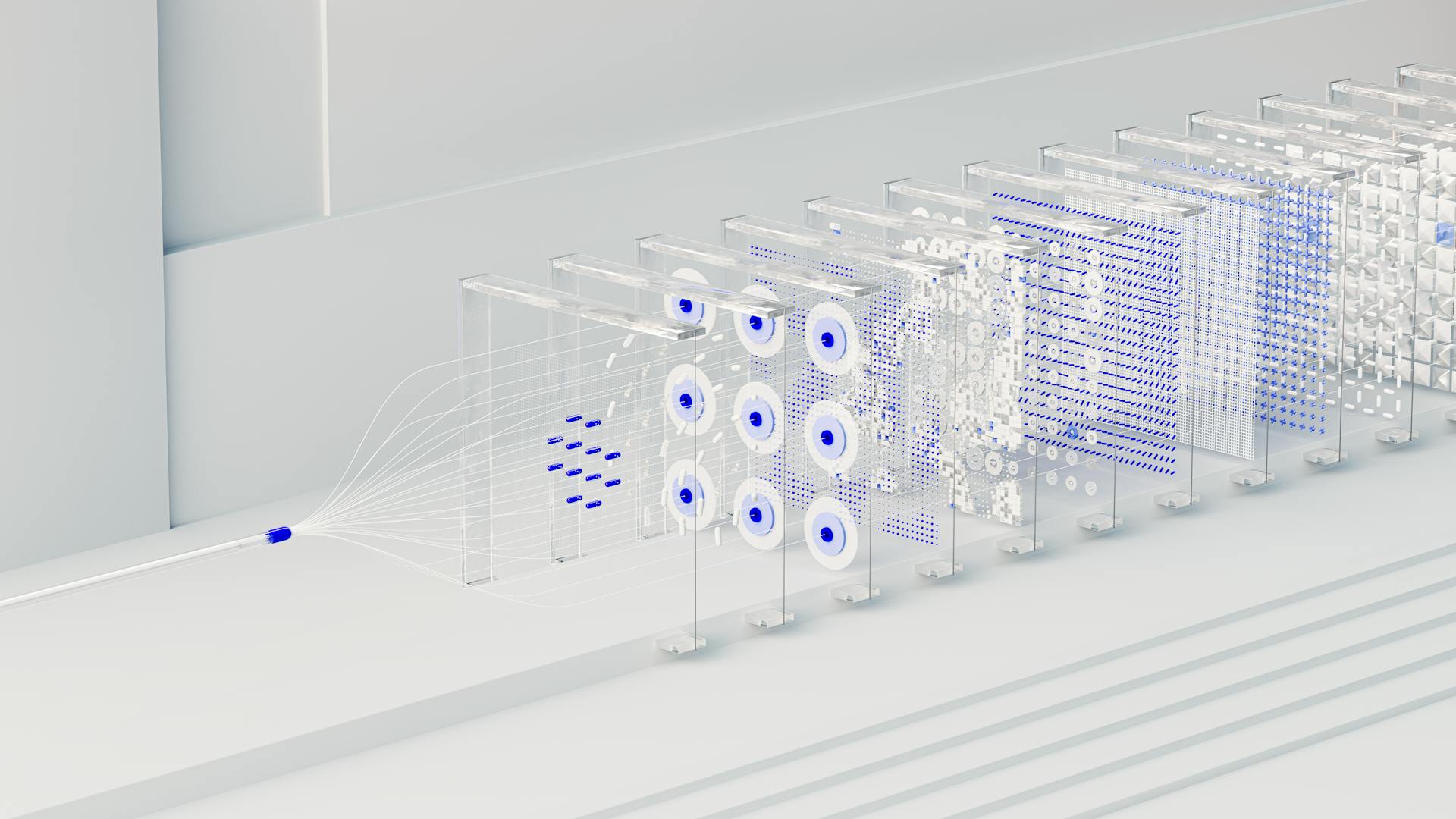
Deep reinforcement learning is a complex field, but it all starts with understanding the basics. The goal of reinforcement learning is to learn a policy that maximizes rewards in a given environment.
A policy is essentially a mapping of states to actions, and the goal is to find the optimal policy that yields the highest rewards. This is achieved through trial and error, with the agent learning from its experiences.
The Markov Decision Process (MDP) is a fundamental framework for modeling reinforcement learning problems. It consists of states, actions, transitions, and rewards, which are used to define the environment and the agent's interactions with it.
For your interest: Rl Agent
What is Deep Reinforcement Learning
Deep reinforcement learning is a powerful machine learning approach that combines deep learning and reinforcement learning. It's a way for artificial agents to learn to solve sequential decision-making problems on their own.
This approach has achieved remarkable results in the past decade, with applications in games like Go, Atari games, and DotA 2, as well as robotics. Deep reinforcement learning is a form of machine learning in which AI agents learn optimal behavior from raw sensory input.
Suggestion: Learn to Code a Game
A key concept in deep reinforcement learning is building machine learning systems that explore and learn based on the responses of the environment. This is a common pattern we all learn from, avoiding things that cause us pain and failure, and embracing things that give us reward and success.
Deep reinforcement learning is often used in high-dimensional environments, where traditional machine learning approaches may struggle. It's a way to create AI agents that can learn and adapt quickly, even in complex situations.
Here are some key characteristics of deep reinforcement learning:
- Combines deep learning and reinforcement learning
- Used for sequential decision-making problems
- Applies to games like Go, Atari games, and DotA 2, as well as robotics
- Built on the concept of exploration and learning based on environmental responses
- Used in high-dimensional environments
Dive Into Learning
Foundations of Deep Reinforcement Learning is a great book to start with, especially for beginners. It's compact, easy to understand, and gets straight into the main algorithms.
The book has a good balance between theory and code, which is essential for learning deep reinforcement learning. You'll learn the theory behind deep RL algorithms and get hands-on experience with implementations in the companion software library SLM.
This book is an introduction to deep RL that uniquely combines both theory and implementation. It starts with intuition, then carefully explains the theory of deep RL algorithms.
Explore further: Computational Learning Theory
Understanding the Basics
Deep reinforcement learning is a field that combines deep learning and reinforcement learning, where artificial agents learn to solve sequential decision-making problems. This field has achieved remarkable results in the past decade, from single and multiplayer games to robotics.
Foundations of Deep Reinforcement Learning is a book that introduces deep RL with a unique blend of theory and implementation. It starts with intuition and carefully explains the theory of deep RL algorithms, making it a great resource for beginners. The book also comes with a companion software library SLM, which helps you get up and running quickly.
To get started with deep reinforcement learning, you'll want to understand the basics. Here are some key concepts to keep in mind:
- Deep RL combines deep learning and reinforcement learning.
- It's used for sequential decision-making problems.
- Foundations of Deep Reinforcement Learning is a great resource for beginners.
Reinforcement Learning Foundations
Foundations of Deep Reinforcement Learning is a great book to start with, especially for beginners, as it's compact and gets straight to the main algorithms.
It's a book that balances theory and code, which will get you up and running quickly.
Readers also liked: Learn to Code Book
Deep reinforcement learning combines deep learning and reinforcement learning, where artificial agents learn to solve sequential decision-making problems.
This approach has achieved remarkable results on various problems, from single and multiplayer games to robotics.
Foundations of Deep Reinforcement Learning uniquely combines both theory and implementation, starting with intuition and then explaining the theory of deep RL algorithms.
It also discusses implementations in its companion software library SLM Lab.
Grokking Deep Reinforcement Learning is another great resource, written for developers with some understanding of deep learning algorithms.
This book introduces deep reinforcement learning using examples, illustrations, exercises, and clear teaching, making it easy to understand.
Foundational reinforcement learning concepts and methods are covered, as well as the most popular deep reinforcement learning agents solving high-dimensional environments.
Deep reinforcement learning is a powerful approach that's being used in various fields, and having a solid foundation in its concepts and methods is crucial for success.
Questions and Answers
I'd be happy to help you with that! Here's the "Questions and Answers" section:

What is the primary purpose of a thermostat? It's to regulate the temperature in a building.
A thermostat works by sensing the temperature and turning the heating or cooling system on or off as needed. This helps maintain a consistent temperature.
How often should you replace the batteries in your thermostat? Typically, every 6-12 months, depending on usage.
What's the ideal temperature for a bedroom? Most experts recommend keeping it between 60-67°F (15-19°C) for a comfortable night's sleep.
Can you leave your thermostat on a low setting when you're not home? Yes, but it's still a good idea to turn it off when you're away for an extended period to save energy.
What's the difference between a programmable and non-programmable thermostat? A programmable thermostat allows you to set a schedule for temperature changes, while a non-programmable thermostat only has a single temperature setting.
How do you know if your thermostat is working correctly? Check that it's accurately reading the temperature and that the heating or cooling system is turning on and off as needed.
Sources
- https://serrano.academy/grokking-machine-learning/
- https://shepherd.com/books-like/grokking-deep-learning
- https://datatalks.club/books/20210517-grokking-deep-reinforcement-learning.html
- https://www.abebooks.com/9781617295454/Grokking-Deep-Reinforcement-Learning-Morales-1617295450/plp
- https://www.amazon.com.be/-/en/Miguel-Morales/dp/1617295450
Featured Images: pexels.com


